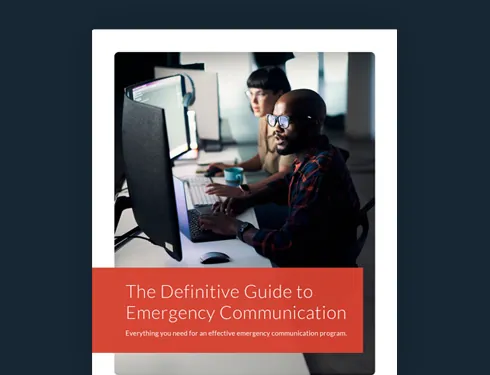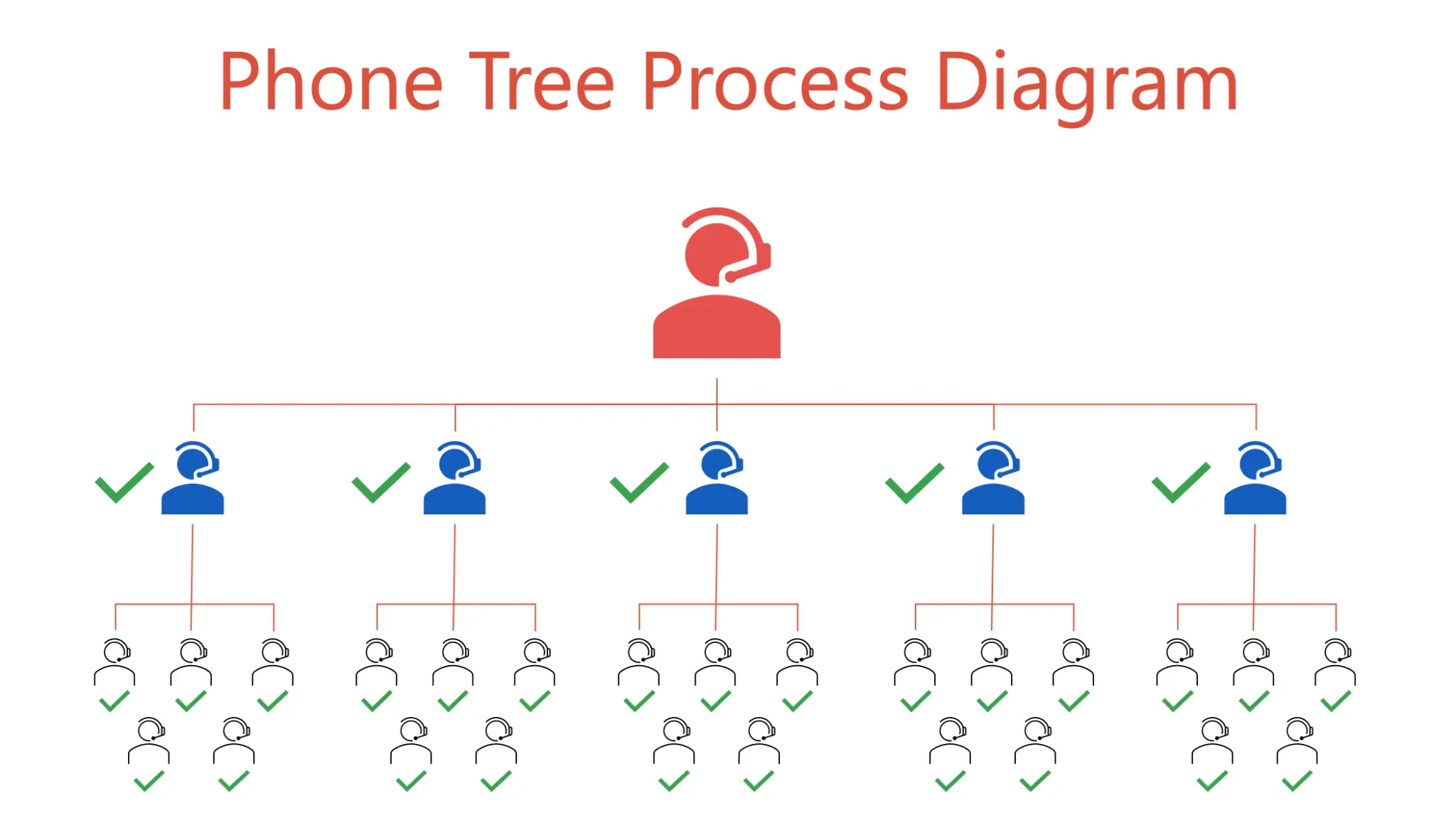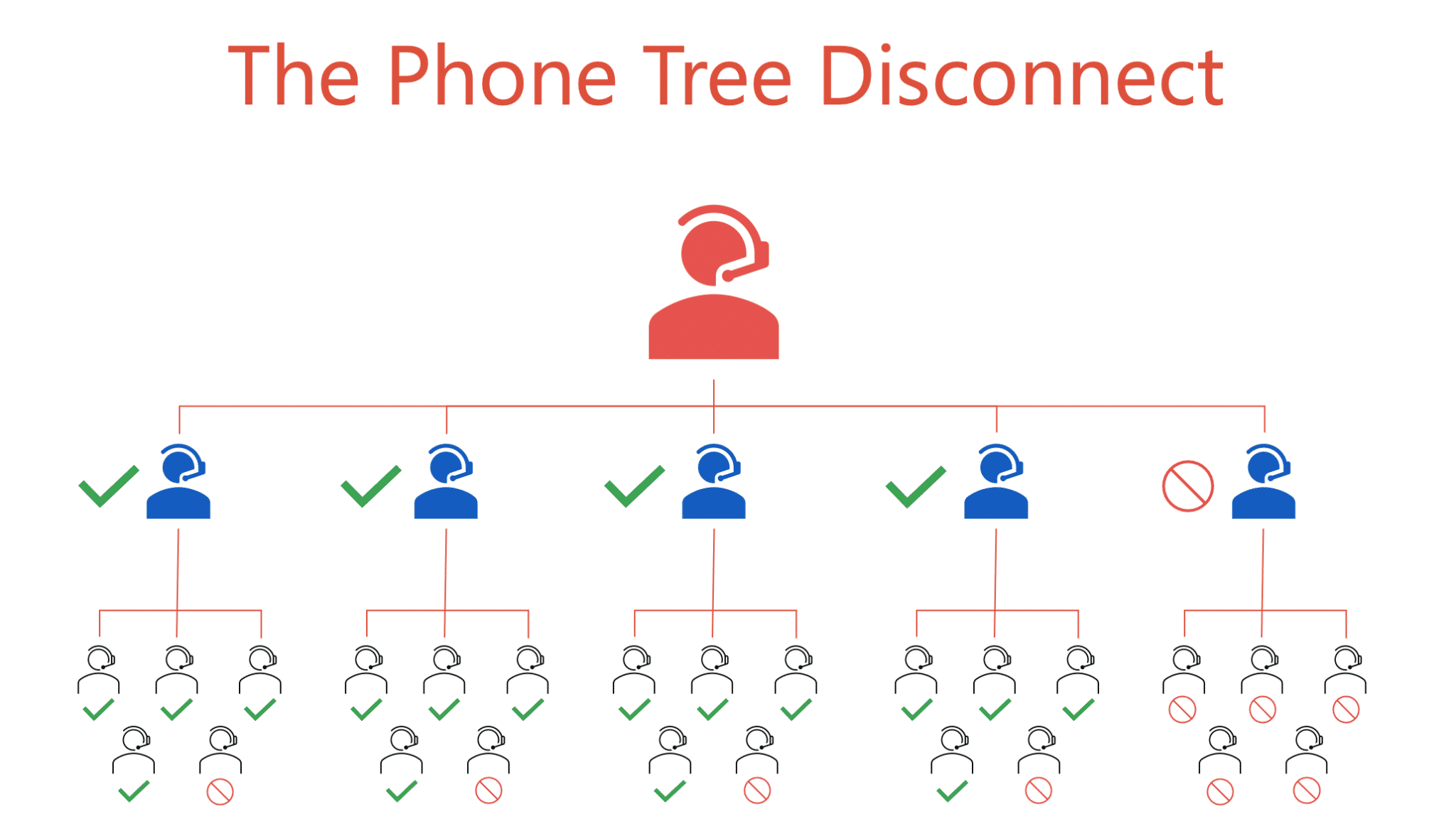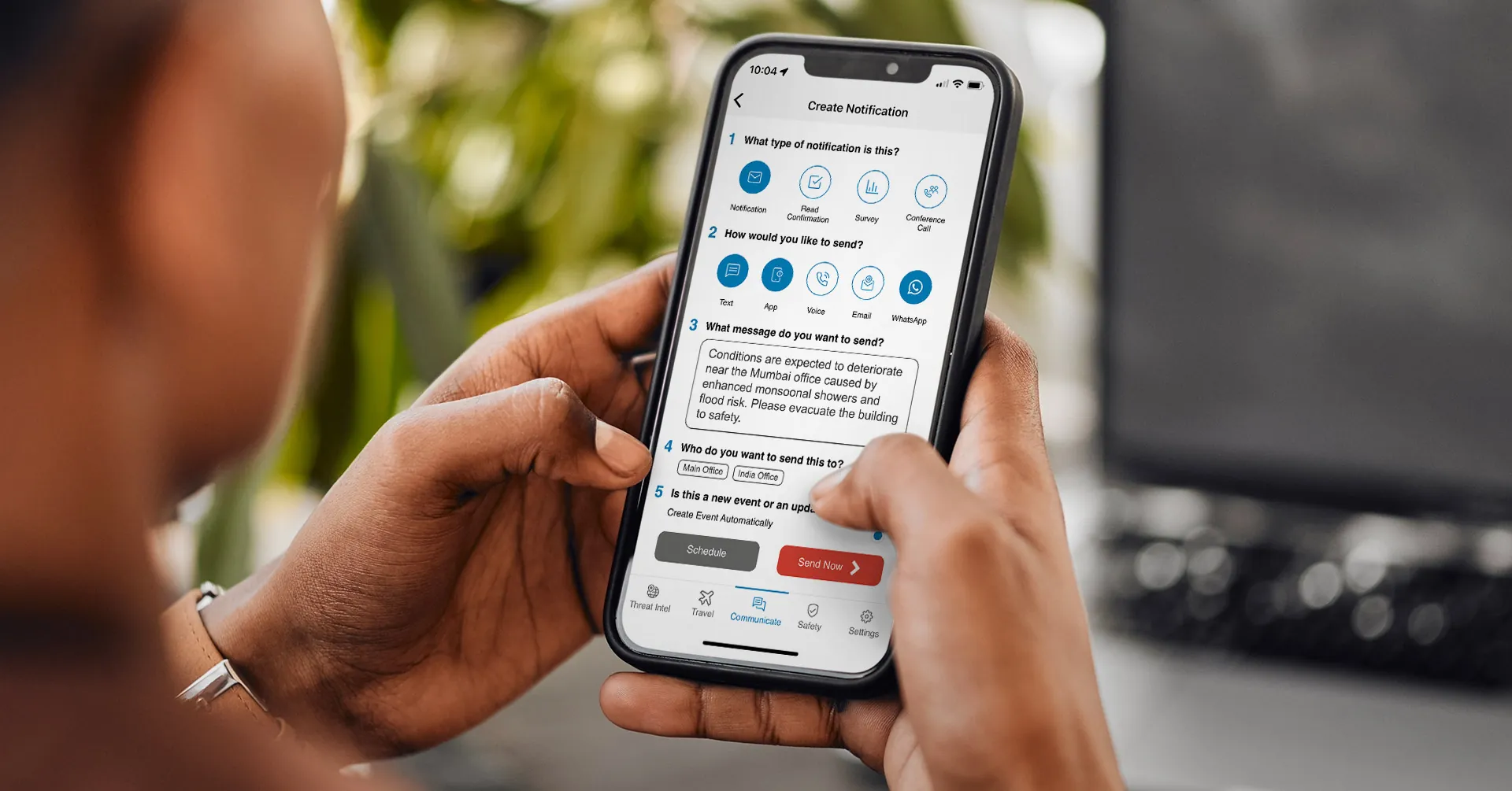
Why Your Phone Tree Is a Liability—And How to Improve It
Phone trees are yesterday’s answer to today’s problems. When an emergency comes knocking, you’ll want something more robust to depend on.

Remember the telephone game? One person starts the chain by whispering to the person sitting beside them until the message reaches the end of the line. Played with enough people, the game inevitably results in the message becoming so jumbled—the person at the end hears something that barely resembles the original. This, essentially, is a phone tree.
Some organizations may choose to utilize a phone tree service as part of their communication plan to deliver non-urgent information. But, when it comes to delivering critical, time-sensitive communications, there are far better ways to ensure the right message reaches your people through simple steps.
In this post, we’ll discuss the basic concept of the emergency phone tree, its evolved cousin the automated phone tree, and how a modern emergency communication system can help improve communication processes beyond either’s capabilities.
What Is a Phone Tree?
A phone tree is a prearranged, defined system of informing and activating a group of people by telephone. The traditional phone tree system—also known as a “call tree” or “telephone tree”—is quite simple by design. Each member of the tree needs to contact only a small group of people, perhaps two to five, who then relay the same information to a group of people they are assigned to inform. The information proliferates from there—each subsequent member of the tree is responsible for phone calls to a handful of team members, following a pre-defined phone tree template, until everybody in the organization who needs to be informed has been contacted.
Before the advent of modern solutions—such as voice-over-internet-protocol services (VoIP phones and other devices)—the phone tree took advantage of interactive voice response (IVR) technology to provide a practical, albeit imperfect, step forward in employee communications.
Do phone trees work?
For decades, the traditional phone tree model has served businesses, governments, schools, healthcare institutions, and other organizations in keeping in contact with large groups of people. The concept is simple: a designated person calls a list of contacts, who then call others, and so on, creating a branching chain of communication. While this method may seem straightforward, its effectiveness is often limited—especially in high-stakes situations where speed, accuracy, and reliability are critical.
Phone trees rely heavily on human intervention, which introduces significant risks. What happens if the first person in the chain is unavailable or misses the call? Consider after-hours emergencies. What if someone forgets to pass the message along or provides incorrect information? These vulnerabilities can lead to delays, miscommunication, or even complete breakdowns in the system. Additionally, phone trees are time-consuming, as each call must be made sequentially, leaving those at the end of the chain waiting far too long for critical information.
In today’s fast-paced world, where emergencies can escalate in minutes, the traditional phone tree model is simply outdated. It lacks the scalability, speed, and reliability needed to ensure the safety and security of your organization. Phone trees are no longer a viable solution for organizations prioritizing safety, security, and business continuity.
The pinnacle of automated communication
Even automated phone trees have their problems, which we’ll discuss down below. There is a better way to stay connected with all of your people, even in rapidly developing situations, and it’s called an emergency mass notification system. Here are six ways it outperforms any phone tree:
- Maintain accurate contact information
- Communicate over multiple channels
- Segment your audience
- Create a central hub for updates
- Support two-way communication
- Get ahead of critical events with threat intelligence

What Is an Automated Phone Tree?
Automated phone tree systems remove much of the “call center” grunt work that has historically plagued manual calling trees, allowing organizations to automatically send out a text message or pre-recorded voice message to any number of contacts. To overcome the challenges posed by manual call trees, many organizations have turned to automation—often phone tree applications.
Churches and religious groups, for example, sometimes use automated phone tree apps to communicate with congregation members about prayer requests, volunteer activities, and special events. A hospital might use it to send out schedule changes. And an airline’s customer support might use it to notify passengers of cancellations. The use of a simple phone tree app might suffice in these types of situations.
But all of these scenarios have something in common: None are true emergency situations.
The illusion of safety with an automated phone tree
During critical events when seconds count, a phone tree should never be your primary communication avenue. In an immediate emergency like a workplace fire, active shooter, or natural disaster, you need something that is faster, more reliable, and more flexible than any automated phone tree software.
Common Phone Tree Shortcomings
Thanks to its ability to inexpensively send bulk calls or texts, an automated phone tree application may have a place in helping you quickly deploy non-urgent messages that need to be blasted to your entire organization. Unfortunately, they are susceptible to various delays and errors that reduce their effectiveness.
Below are some of the most common issues organizations encounter when attempting to use a phone tree during an emergency.
Phone trees result in employees getting left out
Consider a scenario where a communication leader is made aware of an emergency. With a manual phone tree, the leader calls their initial list of five contacts and four immediately pick up the phone and begin cascading the information to their teams; however, one isn’t available, so the leader decides to leave a voicemail and move on.
In this scenario, even with an 80% success rate, one-third of employees in the phone tree did not receive the information upon the first attempt. In critical situations when messages are urgent, there’s a possibility that most of the tree doesn’t receive the information until hours later, all because of a single person. And in rapidly developing emergencies, the event status often changes before the call tree even reaches its last branch.
Phone trees result in information silos
Consider again, for a moment, your childhood experience playing the telephone game with friends. You may recall the laughter and confusion that would often ensue by the time that sentence reached the last person. You may have asked yourself how something so simple could get misconstrued so quickly. Research tells us the reason relates to how our brains are wired to retain information.
A 2018 study by researchers at Indiana University found that only “25% of stories’ original factual details were present in the third-iteration retelling: on average, 5–6 remained out of 20–24 original details.”
This means that at every level of the phone tree, it is likely that the person receiving the information is getting only a fraction of the context and information intended for them. In emergencies—when details often have significant implications on employee safety—it’s clear that a phone tree falls short of expectations when delivering effective, timely emergency communication is of the utmost importance.

Subscribe to the Employee Safety Podcast and be the first to hear expert interviews, best practices, and advice from industry leaders every week.
6 Ways an Emergency Notification System Can Beat Your Automated Phone Tree
With a modern emergency communication system, organizations can effectively communicate during critical events to keep their people safe, informed, and connected. Emergency communication software automates the grunt work of sending out bulk messages so you can focus on communicating.
An emergency communication platform offers many distinct advantages over the functionality of manual or automated phone trees, including the ability to:
1. Maintain accurate contact information
With its ability to integrate with existing systems that store employee records—such as your Active Directory, HRIS, or travel software—an employee notification system allows you to easily import and maintain your people’s phone numbers, addresses, and other data. This means you always have access to the latest contact information for employees, helping you ensure everybody in your audience receives important notifications as intended.
2. Communicate over multiple channels
Employees’ preferred communication channels are dramatically different from those even a decade ago. If you target only one or two channels, you may miss a significant number of employees who could be in harm’s way. With an emergency communication system, you can simultaneously send messages across multiple channels, including
- SMS texts
- WhatsApp notifications
- Push notifications
- Voice calls
- Intranet updates
- Social media posts
- And custom channels
You can even send messages with text or voice menu options to run surveys or check-ins.
3. Segment your audience
Employees will quickly tune out if they receive messages that aren’t relevant to them. To target your messaging, an emergency communication system allows you to segment employees into accessible groups based on location, department, or any other attribute. And since location is usually a primary factor in determining who is at risk in an emergency, an emergency communication system can even help you leverage location intelligence, sending unique messages based on an employee’s home address, office location, physical location, and more.
—Larry Robert, Former VP of Business Continuity, Rockland Trust
4. Create a central hub for updates
With a modern emergency communication system, you can provide a single online repository for everything related to a specific event. Instead of having employees wait to be phoned with updated information—especially in rapidly developing situations where event details are changing constantly—they can continually visit the provided event page link, making it easier and more efficient for organizations to keep employees informed every step of the way.
5. Support two-way communication
One of the biggest downfalls of the phone tree approach is its inability to facilitate two-way communication with employees during critical events. Conversely, a modern emergency communication system enables your audience to interact with you in real-time. This feedback loop not only allows you to confirm their safety and current status, but it also expands the eyes and ears of your organization, providing you with additional information to make informed decisions. Modern systems include audience communication features such as read receipts, surveys, incoming messages, and “need help” requests.
6. Get ahead of critical events with threat intelligence
An emergency communication solution with integrated threat intelligence notifies organizations when their people or assets are at risk. This solution allows you to view all emerging and current threats on an interactive map—where organizations can also see their office locations, traveling employees, employee home addresses (which are especially important during remote work), and other business-critical assets. When a threat emerges that could impact their company, system admins are notified immediately. Companies can even opt to have employees notified directly when a threat emerges so not a second is lost.
—Tom Porter, former Director of Human Resources and Administration at Kawasaki
Branch Out Beyond Legacy Processes
Traditional methods of communicating with employees during times of crisis are no longer as effective as they once were. Phone trees are rapidly becoming a thing of the past—and for good reason. Advances in emergency communication technology have given organizations a much more effective way to disseminate critical, time-sensitive information to employees.
For years, Kawasaki Motors Corp. used phone trees to communicate with employees during emergency events like the California wildfires. But Tom Porter, Kawasaki’s former Director of Human Resources and Administration, quickly “recognized that newer technology could greatly improve Kawasaki Motors’ critical communications, particularly a mass notification system.” Adds Porter, “during an emergency, it wasn’t acceptable to continue to rely on dated communication methods. With emails and phone calls, there is always the potential for inconsistent information, and you end up playing the game of ‘telephone.’”
Employees now expect real-time information during emergencies delivered where and when they need it. Relying on a phone system to reach out to a large number of people during critical events is akin to setting your organization up for communication failure. When minutes can mean the difference between a minor incident and a major disaster, communication failure is not an option.




